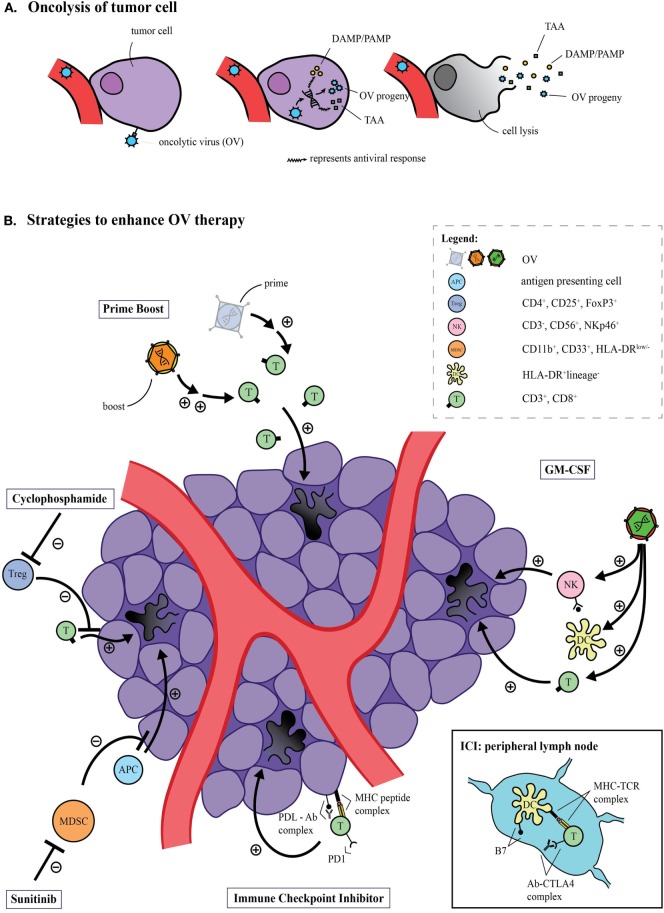Figure 1.
Oncolytic virus (OV)-mediated tumor cell lysis. (A) OV can specifically infect cancer cells, and subsequent replication can induce oncolysis. The release of tumor antigens has the potential to activate a systemic antitumor immune response. (B) The immune response induced by OV can be improved through several strategies. The prime-boost approach utilizes one priming viral platform carrying tumor-specific antigens, while a second platform—usually an OV—carrying the same antigens boosts the resultant antitumor immune response. The insertion of transgenes, such as GM-CSF, can facilitate antigen presentation on the surface of dendritic cells, and thus augment an antitumor response by recruiting natural killer (NK) cells and inducing tumor-specific cytotoxic T-cells. Immune checkpoint inhibitors can function both at the level of the tumor, targeting the programmed cell death protein 1 (PD-1) axis or peripherally at the level of the lymph nodes by targeting the cytotoxic T lymphocyte-associated antigen 4 (CTLA-4) axis. Both approaches ultimately improve the antitumor response. Immunomodulatory drugs such as sunitinib and cyclophosphamide can augment the antitumor immune response of OV by inhibiting immunosuppressive populations, such as myeloid-derived suppressor cells (MDSCs) and regulatory T cells (Tregs), respectively.

